FY2020 Annual Report
Quantum Wave Microscopy
Professor Tsumoru Shintake
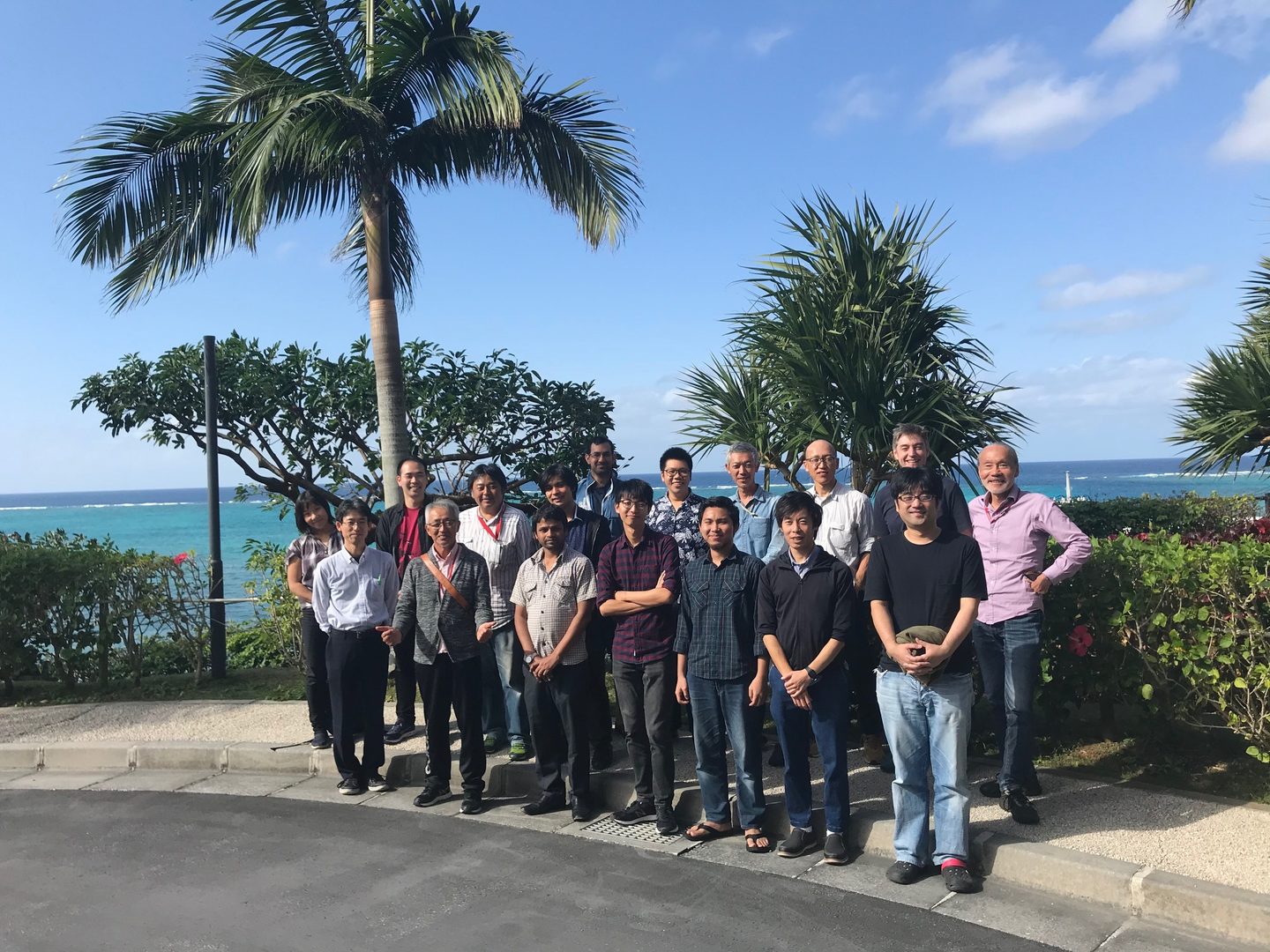
Abstract
Microscopy group
Travel was heavily restricted this year because of the global covid19 pandemic, but work continued onsite at OIST. We made some significant progress across our diverse projects as documented below, and importantly, we also completed the extensive 5-year external unit review process within this year, with positive results. (Dr.) Ankur Dhar succesfully defended his thesis and obtained his PhD this year, before departing for postdoc position at SLAC.
Wave energy group
The plan for Maldives' Ducted-OIST WEC has been heavily effected by the international travel restriction, so that it is delayed until March 2021. In the mean time, a new design for the Duct based on the data gathered in the first full-scale deployment at the Port of Seragaki has been done and deployed by modifying the currently installed original version. At OIST, a small-scale Duct experimental setup has been established and a campaign of Duct outlet pressure analysis has been done. We also received a visit from Dr. Ingomar Lochschmidt, the Commercial Counsellor of the Austrian Embassy, to hand in the Global Energy Award certificate to Prof. Tsumoru Shintake's unit for the project in Maldives.
1. Staff
- Dr. Masao Yamashita, Staff Scientist
- Dr. Cathal Cassidy, Staff Scientist
- Dr. Ryusuke Kuwahara, Staff Scientist
- Dr. Hidehito Adaniya, Research Unit Technician
- Dr. Martin Philip Cheung, Research Unit Technician
- Seita Taba, Research Assistant
- Hideki Takebe, Specialist
- Jun Fujita, Research Unit Technician
- Shuji Misumi, Research Unit Technician
- (Dr.) Ankur Dhar, OIST PhD Student (until August 2020 => PhD awarded)
- Hanley Andrean, OIST PhD Student
2. Collaborations
2.1 Theme: Comparison of low energy microscopy techniques
- Description: At OIST, we have developed specific competence in preparing low-kV compatible ice-embedded samples. We are collaborating with Hitachi to understand how such samples appear in high-end commercial microscopes, and how the performance compares with our self-developed holography microscope.
- Type of collaboration: Joint research
- Researchers:
- HITACHI
- Dr. Hidehito Adaniya, Dr. Martin Cheung (OIST)
2.2 Imaging magnetic monopoles in spin ice
- Type of collaboration: Joint research
- Researchers:
- Mr. Ankur Dhar, OIST
- Dr Ludovic Jaubert, CNRS Bordeaux
- Prof. Nic Shannon, OIST
2.3 Theme: Electron holography & diffraction for nanocrystal structure determination
- Description: At OIST, we are exploring a hybrid Bragg inline holography/diffraction experimental configuration for nanocrystal diffraction, while Dr. Latychevskaia is providing support for simulation and analysis of the experimental data.
- Type of collaboration: Joint research
- Researchers:
- Dr. Cathal Cassidy (OIST)
- Dr. Tatiana Latychevskaia, (Paul Scherrer Institute & University of Zurich, Switzerland)
2.4 Theme: Structural and functional studies of virulence factors from clinically significant bacterial pathogens (AMED)
- Description: Collaborating closely with members of the Agency for Medical Research and Development (AMED) scheme at OIST, this project seeks to utilise high-resolution cryo-electron microscopy to study isolated virulence factors from clinically significant bacterial pathogens, such as Shigella, Salmonella and Yersinia. This project will potentially have important implications for new antibacterial and vaccine development.
- Type of collaboration: Collaborative project with the Agency for Medical Research and Development (AMED) scheme at OIST
- Researchers:
- Dr. Martin Cheung, Mr. Seita Taba (QWM unit, OIST)
- Dr. Ryo Kanno, Dr. Malgorzata Hall (AMED, OIST)
- Dr. Bruno Humbel (AMED, OIST)
3. Activities and Findings
3.1 Electron microscopy group
3.1.a Development of electrospray sample deposition system (Dr. Masao Yamashita)
Our unit has been focusing on low voltage holographic imaging of bionanoparticles (such as viruses) using an ultraclean graphene as a specimen support film. The graphene is logically the best specimen support film for the low voltage TEM/STEM imaging as it is only one-atom-thick and has high electrical conductivity. On the other hand, logically the best specimen would be the molecules that are completely free from surrounding solvent molecules. To realize the specimen preparation using such desolvated molecules we have been focusing on the possibility of using the electrospray ionization method. After 3 years of development, we completed the construction of the Electrospray Molecular Deposition System (EMDS) (Fig. 1a and Fig. 1b). Application of this system to biosamples resulted in some success (Fig. 1c). 
Fig. 1. Electrospray Molecular Deposition System (EMDS)
However, in many cases, a conventional electrosprayer cannot work stably with the solutions of biological macromolecules. Overcoming this issue is very important for ensuring practicality of this in-vacuo EM specimen preparation methodology. Our current work therefore focuses on improving the electrosprayer by improving the sprayhead (made of a fine capillary tube) design. We are trying to do so by exploiting the latest micropipette fabrication technology.
3.1.b Microscope hardware development (Dr. Hidehito Adaniya)
This year we have launched one of the remaining investigations of this R&D project, namely quantifying the image quality of the scanning transmission modes for ice-embedded specimens.
The electron optics applied in the cryo-holography project thus far conducted is modified to accommodate the electrons scattered in wide ranges for the bright-field STEM mode of low-angle-scattered electrons, and the annular-dark-field STEM mode of high-angle-scattered electrons respectively (Figure 1).
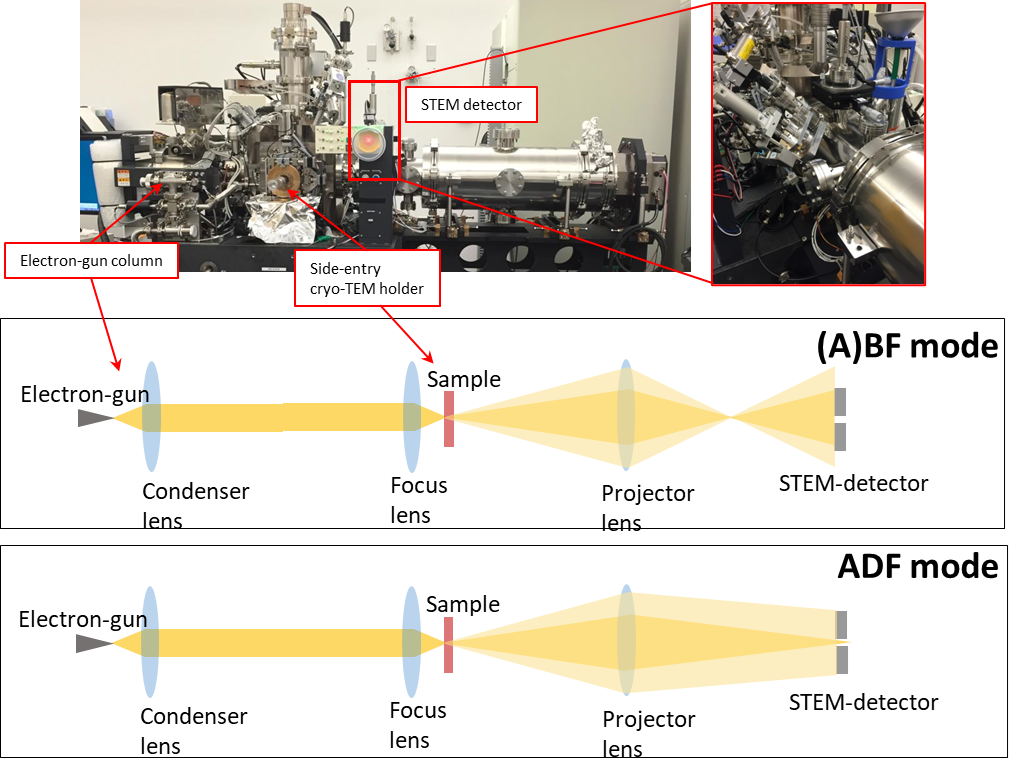 Figure 1. Electron optics of the STEM modes in DMF4000 electron microscope developed at Shintake Unit.
Figure 1. Electron optics of the STEM modes in DMF4000 electron microscope developed at Shintake Unit.
It would be of great interest to investigate how the images formed in the respective modes reflect; (1) the characteristics of the electron-atom scattering in the low-energy domain where high scattering cross-sections over a wide range of the scattering angles are possible, (2) the amount of imageable electrons scattered through ice film and the effect of ice-thickness on the image clarity, and (3) the amount of the electron dose with resultant radiation damage.
As in the case of low-energy cryo-holographic imaging, successful cryo-STEM imaging is expected to be influenced by sample quality especially in low-energy domain. The preparatory scheme for ice-embedded specimens assisted with graphene oxide films we have thus far developed for cryo-holographic imaging is also applied in this imaging.
Preliminary results obtained (Figure 2) show successful images of ice-embedded biomolecules, suggesting this mode has also a potential for the screening microscope of ice-embedded biological molecules.
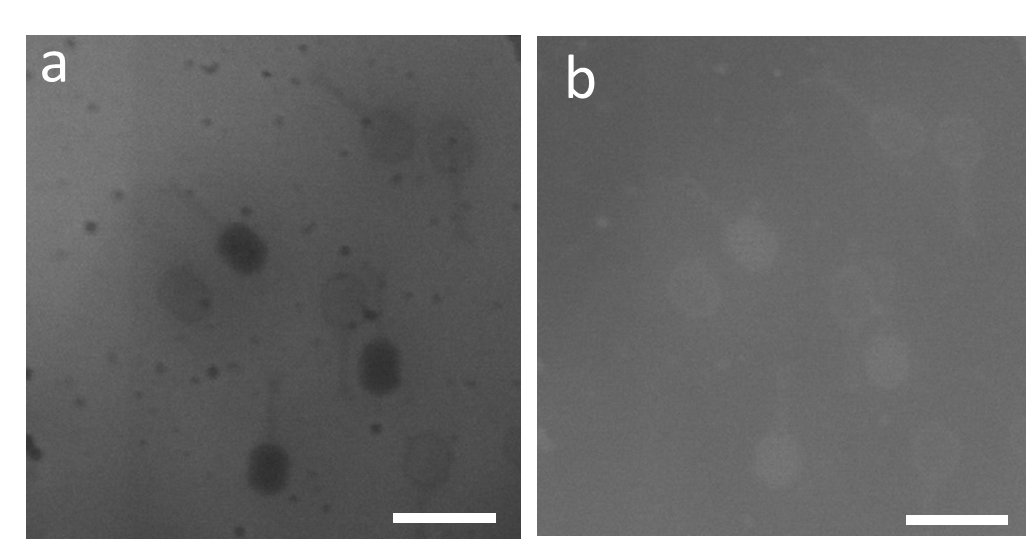
Figure 2. STEM mages of bacteriophage T4. (a) Bright-field mode with acceptance angle to 9mrad (b) Annual-dark-field mode with acceptance angle from 9mrad to 72mrad. All scale bars, 100 nm.
3.1.c CryoEM and MS studies of Shigella flexneri (Dr. Martin Cheung)
My primary research interests lie in the bacterial pathogen Shigella flexneri, the causative agent responsible for the potentially fatal disease bacillary dysentery. The goal of my work is to elucidate the underlying mechanism by which S. flexneri rapidly invades target cells during infection. To this end, I am currently utilizing the mass spectrometry (MS) and cryo-electron microscopy (cryo-EM) facilities at OIST to study a membrane-embedded macromolecular complex called the injectisome (also known as the type III secretion system), which S. flexneri employs to inject disease-causing effector proteins directly into target cells. This work is funded in part by the Japan Agency for Medical Research and Development (AMED) program and Grants-in-Aid for Scientific Research (KAKENHI).
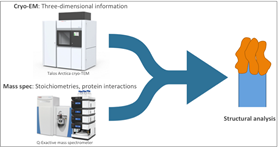
Fig. 1. Utilization of mass spectrometry and cryoEM to elucidate the structure and infection mechanism of Shigella flexneri.
3.1.d Electron holography studies of CdTe crystals and devices (Dr. Cathal Cassidy)
Our primary effort this year has been to understand the physical processes underlying the mean free path (MFP) for electron scattering in CdTe, as measured from electron holography amplitude data. We had previously measured the CdTe mean free path via EELS [Cassidy et al, APL, 2017], but the measured value and underlying physics are rather different for electron holography. Aside from holography, we also employed complementary diffraction and energy-filtering measurements to help deconvolute the various contributions to the observed scattering behaviour. Furthermore, we performed quantitative comparison of hologram centreband and sideband signals, to help differentiate the underlying factors contributing to these respective signals. These factors included hardware specific parameters (e.g. aperture collection angles, biprism voltage); as well as more fundamental electronic (e.g. plasmon) and nuclear (e.g. TDS) scattering processes in the specimen. These results have been published in the Journal of Applied Physics (selected as a Featured Article).
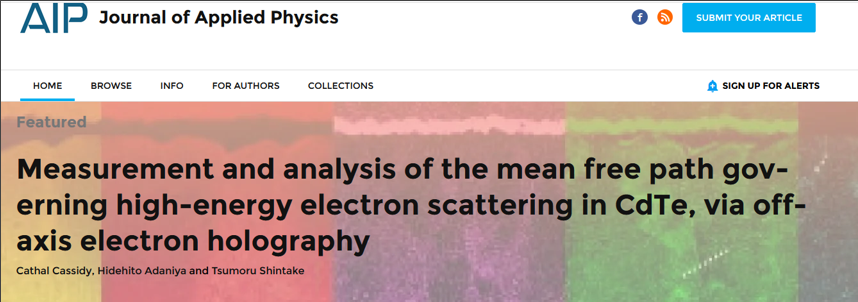
This work is supported by Kakenhi Grant-In-Aid for Scientific Research (#38005, Category - Scientific Research C, “Electron Holography Studies of CdTe”).
We also continued our efforts with Dr. Latychevskaia at PSI, on Bragg diffraction from nanocrystals, and have submitted a first manuscript for publication.
3.1.e Electron holography studies of Artificial Spin Ice (Ankur Dhar, PhD student)
Dr. Dhar successfully completed his PhD during FY2020, co-supervised by Prof. Shintake and Prof. Shannon. The full text is available on the OIST Institutional Repository website (linked below).
3.2 Wave Energy Converter Group
3.2.a New design of the Ducted- OIST Wave Energy Converter (WEC)
Upon inspection of the broke turbine blades (as mentioned in the previous report), it is inferred that a high impact pressure over the very short period of time caused a high pressure to the turbine blade and cause damages to the shaft connection between the turbine and the generator making the device unable to performed at its highest condition. Because of this, the design of the wave energy converter then modified to avoid the same problem occurring the future. Figure 1 shows the diagram of the new design concept. As can be seen, a one-way valve Flap has been added on the front of the structure to minimise any back-flow of the water when the wave trough is coming after the wave crest passed. Furthermore, this water could also act as a cushion to reduce the impact from the incoming breaking wave.

Figure 1. New design concept of the Ducted-OIST Wave Energy Converter (WEC).
The previous deployment analysis also suggests that it is better to keep the generator above the sea level, so an L-shape attachment is added to the design with an angle so that the generator can be placed above sea level. The turbine is made by Yamaha Motor using stainless-steel casting with higher erosion resistance. Based on the data gathered on the previous design’s deployment, this modification should be able to increase the survivability of the device under stronger (and more frequent) breaking wave in the Maldives.
3.2.b Full-scale prototype installation at the Port of Seragaki, Okinawa
To check the effectiveness of the modification, on 6th and 7th November 2020, the new design of the Ducted-OIST Wave Energy Converter is installed using the currently installed original Ducted-OIST WEC at the Port of Seragaki, Okinawa (Figure 2 (a) and (b))

Figure 2. New-Ducted WEC installed at Seragaki site. (a) overall configuration, and (b) submerged turbine with the access port open
The data gathered shows a significant reduction in impact pressure received by the turbine and a smoother and wider period of power generation compared to the original design. Furthermore, and access port to the turbine is added to the new design in order to have easier access to the turbine in case of maintenance.
3.2.c Full-scale prototype installation at the coast of Kandooma Island, Maldives
In December 2019, four (4) Ducted-OIST WEC structure were sent to the Maldives by sea. Unfortunately, due to the restriction of international travel from both Japanese government and the Maldives government, we were unable to take those devices and installed them in the designated spot within the planned schedule (May 2020). Instead, we were forced to leave the Duct structure under water, and we predicted that there will be quite significant damage done to the structure by the time we can install them.
Based on the observation on the new design performance at Seragaki and the considering the components that have been sent to Maldives, it is decided that two (2) new design and two (2) original design will be installed in the Kandooma island, in Maldives. Furthermore, the effect of one-way valve flap at the inlet of the Duct will not be included in the Maldive’s installation because Seragaki’s observation shows that it has an insignificant improvement to the overall performance of the device when compared to the added cost.
The installation plan in Maldives will be done in two phases. The first one will be in March 2021 with four Ducted-OIST WEC installed on the ocean. In the meantime, the power conditioner and other peripherals will be sent to Maldives, for the second phase of the installation planned in June 2021. More report will be done once the installation is finished.
3.2.d Small-scale Taper Duct wave-structure interaction analysis
Continuing from the previously started Small-scale Taper-Duct study, several improvements has been added to the small wave flume currently installed in the OIST WEC laboratory. A pressure sensor has been added in order to measure the pressure of the breaking wave with and without the Duct, thus enable a more controlled testing environment for the Ducted-OIST WEC design, with reduced cost. Figure 3 (a) shows the experimental set-up during experiment and (b) shows the water pressure measured on the outlet of the Duct.

Figure 3. Small-scale physical model experiments (a) overall setup, and (b) pressure measurement at the Duct's outlet under breaking wave.
4. Publications
4.1 Journals
"Measurement and analysis of the mean free path governing high-energy electron scattering in CdTe, via off-axis electron holography"
C. Cassidy, H. Adaniya, T. Shintake.
Journal of Applied Physics (2021) 129 055109. doi.org/10.1063/5.0036989
4.2 Books and other one-time publications
Nothing to report
4.3 Oral and Poster Presentations
Nothing to report (corona virus restrictions reduced our activities greatly).
5. Intellectual Property Rights and Other Specific Achievements
Nothing to report.
6. Meetings and Events
6.1 Visit from Dr. Ingomar Lochschmidt, from the Austrian Embassy
- Date: Friday, 27th November 2020
In November, we received a visit from Dr. Ingomar Lochschmidt, the Commercial Counsellor of the Austrian Embassy, on behalf of the Energy Globe Foundation, to hand in the prestigious Global Energy Award for Maldives 2020 which awarded to the OIST-WEC project currently done in Maldives.

Figure 1. Dr Ingomar Lochschmidt, Commercial Counsellor of the Austrian Embassy Commercial Section, giving award to Professor Tsumoru Shintake, President Peter Gruss, along with OIST Wave Energy Team during his visit to OIST on 27th Nov 2020.
7. Other
7.1 Outreach
- Elementary School Workshop (1st October 2020)
- Venue: Nakahara Elementary School, Uruma City (~20 students)
- Title: "Careers in Science and Technology"
- Speaker: Dr. Cathal Cassidy.
- Middle school student mentoring (Nov 2020 ~ present)
- Venue: Hope International Academy Okinawa (Chatan)
- 1:1 Mentoring for high school physics student (ongoing, biweekly)
- Mentor: Dr. Cathal Cassidy
- OIST Science Festival 2021
- Date: January 2021
- Role: Microbiology demonstrator
- Contributor: Dr. Martin Cheung
7.2 Media
- The magazine All Africa interviewed and reported comments from Prof. Shintake on steam and ethanol inhalation for covid treatement
- In the interview series "Encounters That Will Create an Unknown Future", MIRA TUKU's CEO Yuya Nishimura acts as an interviewer and talks to researchers at OIST. The second interview of the series was about Prof. Tsumoru Shintake (Quantum Wave Microscopy Unit), who has been involved in accelerator experiments since the 1980s, building huge experimental facilities and developing many devices to accelerate and collide electrons and other particles.
7.3 Covid19 activities
- arXiv preprint
- Title: "Possibility of Disinfection of SARS CoC-2 (COVID-19) in Human respiratory Tract by Controlled Ethanol Vapor Inhalation".
- Prof. T. Shinake.
- Link: https://arxiv.org/abs/2003.12444
- Started experimental study on ethanol treatment of influenza with mouse. Collaborating with Ishikawa Unit.



